How To Connect Flat Feet To Military Service
In this postal service, I'll explain the iii all-time ways to get a VA rating for apartment feet along with skillful-level tips for your apartment feet C&P exam.
Many veterans endure from various foot conditions, including pes planus (more commonly known as flat feet) and plantar fasciitis, and are seeking to service connect their disabilities for VA benefits.
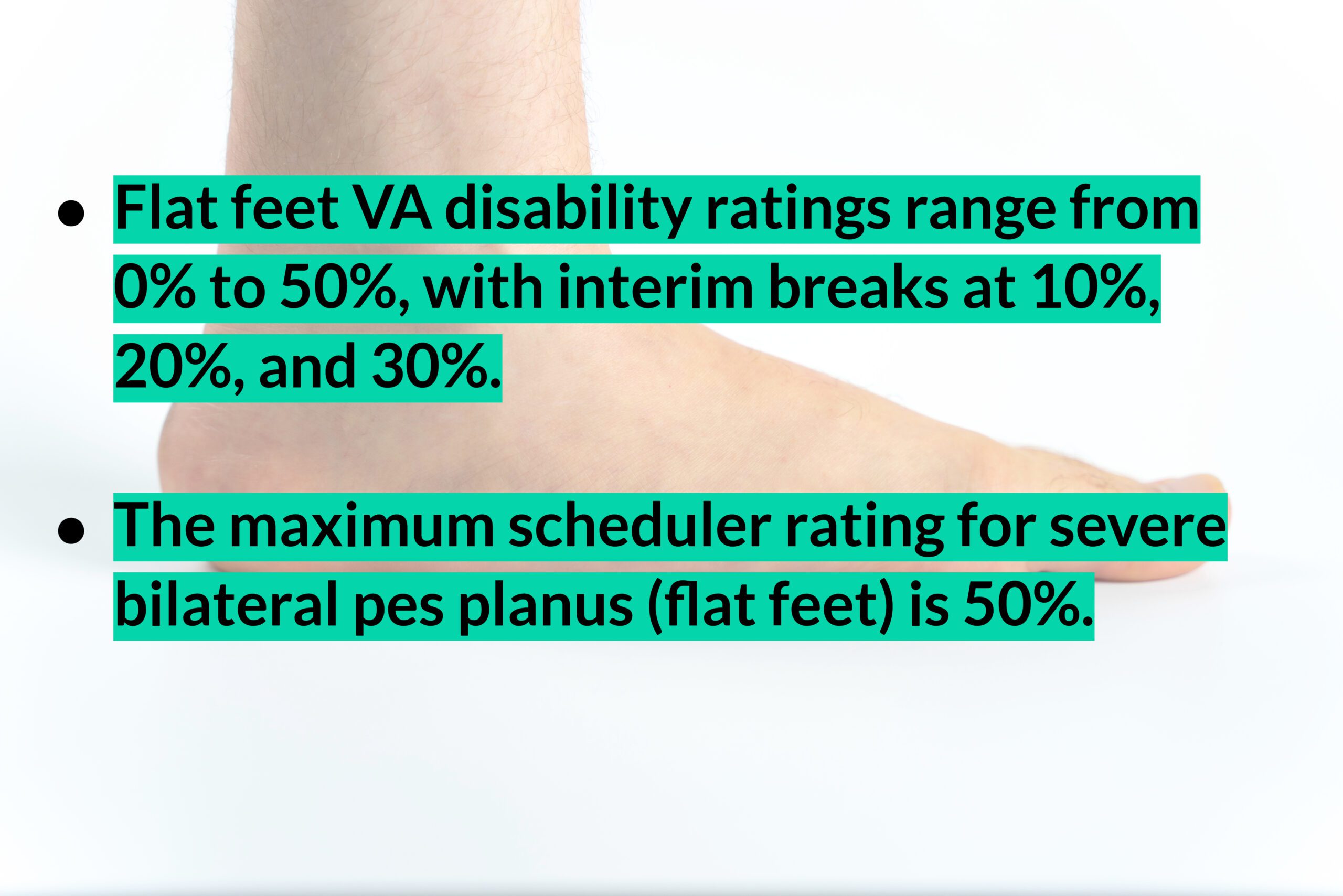
In 2022, flat feet VA disability ratings range from 0 percent to 50 percent, with interim breaks at 10 pct, xx percent, and 30 percent.
The maximum scheduler rating for astringent bilateral human foot planus (flat feet) is l percent.
Your final VA rating for foot planus depends upon whether the condition is unilateral or bilateral equally well every bit the severity of your symptoms in terms of frequency, severity, and duration.
Okay, allow's jump into how to become your pes planus rated for VA disability purposes.
What are Flat Feet (Foot Planus) in Veterans?
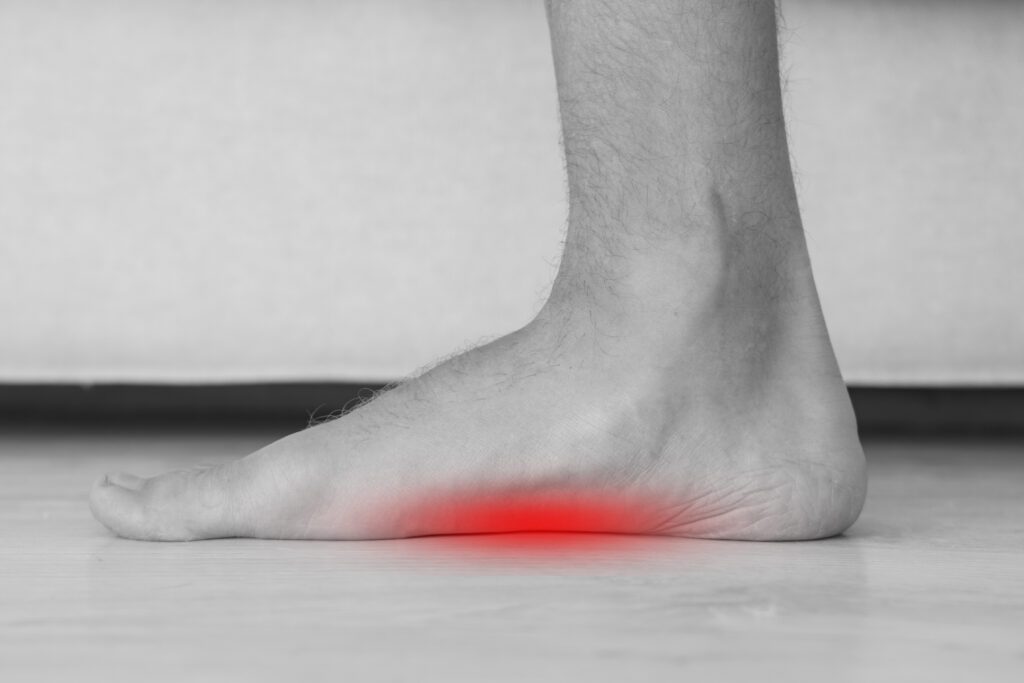
Veterans have apartment feet when they have petty to no arch (flattened pes), which lets the entire sole of one or both feet touch the ground when standing or walking.
Flat feet are a common condition that's normally painless; all the same, they tin can become painful over time due to overuse, obesity, running, war machine combat boots, or wearing poor insoles.
Keep in mind flat anxiety can too develop after an injury or from everyday vesture-and-tear such every bit military service.
Also note that you might have entered military machine service with flat feet, which is known as a "pre-service disability."
Many veterans accept flat feet aggravated past military service (beyond their natural progression), in which case, you're eligible for VA disability benefits based upon "aggravation of a pre-service disability," assuming you lot have medical evidence showing that your apartment anxiety worsened over fourth dimension.
Apartment anxiety can likewise cause bug in your ankles, knees, hips, and back because the condition can alter the alignment of your legs—these are all common secondary weather for secondary service connection.
There are several run a risk factors for apartment feet including: Obesity, injuries to your human foot or ankles, rheumatoid arthritis, aging, and diabetes.
How to Service Connect Your Flat Feet for VA Disability

To get your VA claim for flat feet approved, you lot need to prove 3 essential elements:
- #1. Medical diagnosis of flat anxiety. This can exist in Service Treatment Records (STRs), VA medical records,OR any private records, merely it needs to be in a medical record. It does help to take a "electric current" medical diagnosis of foot planus within the past 12 months, although information technology's non required.
- #2. Your flat feet were caused or fabricated worse by yourActive-DUTY war machine service ("Nexus")OR it's proximately due to or aggravated pastANOTHER service-continued disability rated at 0% or higher for secondary service connection.
- #3. Electric current symptoms of apartment feet, which we call "Severity of Symptoms." How severe are your symptoms and how are your apartment feet negatively impacting your work, life, and social operation? Too remember about "Functional Harm" or "Economic Loss" due to the severity of your flat feet.
If y'all remember you take a foot disorder such as pes planus (flat feet), simply don't have a medical diagnosis, pick-up the phone and call the VA facility nearest y'all to make an appointment right abroad.
You'll probable be referred from your Primary Care Doctor to a Podiatrist, who is a medical professional that specializes in the handling of disorders of the foot, ankle, and related structures of the leg.
If you're trying to increase your VA inability rating for flat feet, you demand to prove to the VA that your symptoms are now worse and warrant the higher rating criteria past police.
The #ane all-time way to increase your VA rating for human foot planus is to have objective medical testify that shows how your symptoms have worsened over time.
How Practise I Become a Apartment Anxiety VA Inability Rating?
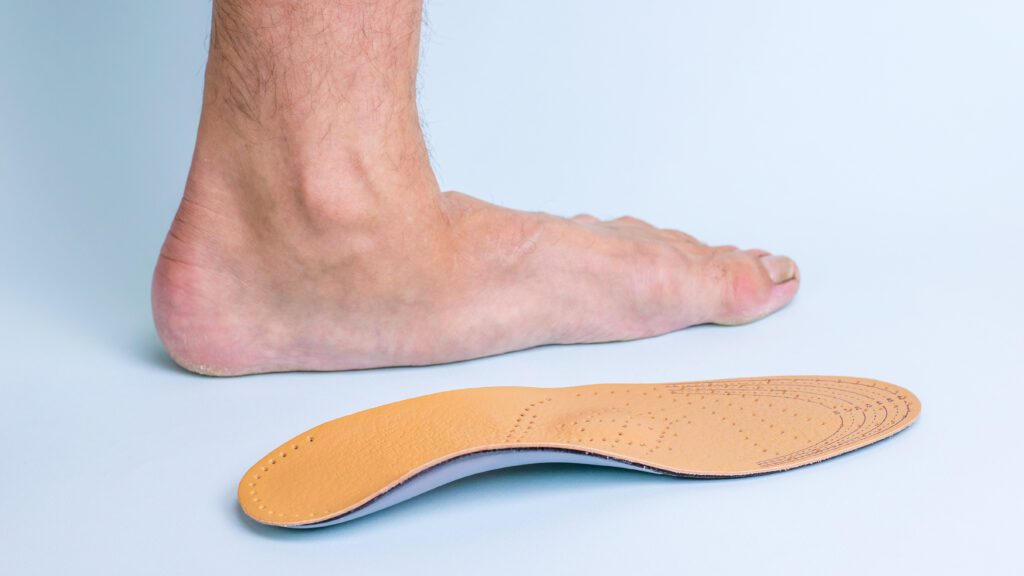
In that location are 3 primary ways a veteran can get a flat feet VA rating:
- #i: Direct Service Connectedness for Flat Feet rated either unilateral or bilateral, with VA ratings of 0%, 10%, 20%, 30%, or l%.
- #ii: Secondary Service Connection for Flat Anxiety rated either unilateral or bilateral, with VA ratings of 0%, 10%, 20%, 30%, or l%. For case, a veteran could be rated for Flat Feet secondary to Ankle Pain.
- #iii: Aggravation of a Pre-Service Disability for Flat Feet rated either unilateral or bilateral, with VA ratings of 0%, 10%, twenty%, xxx%, or 50%. For instance, a veteran could exist rated for Flat Anxiety due to aggravation of a pre-service disability. This ways yous had the condition before y'all joined the armed services, merely your military machine service aggravated your apartment feet across their natural progression.
What are the Flat Anxiety VA Inability Ratings?
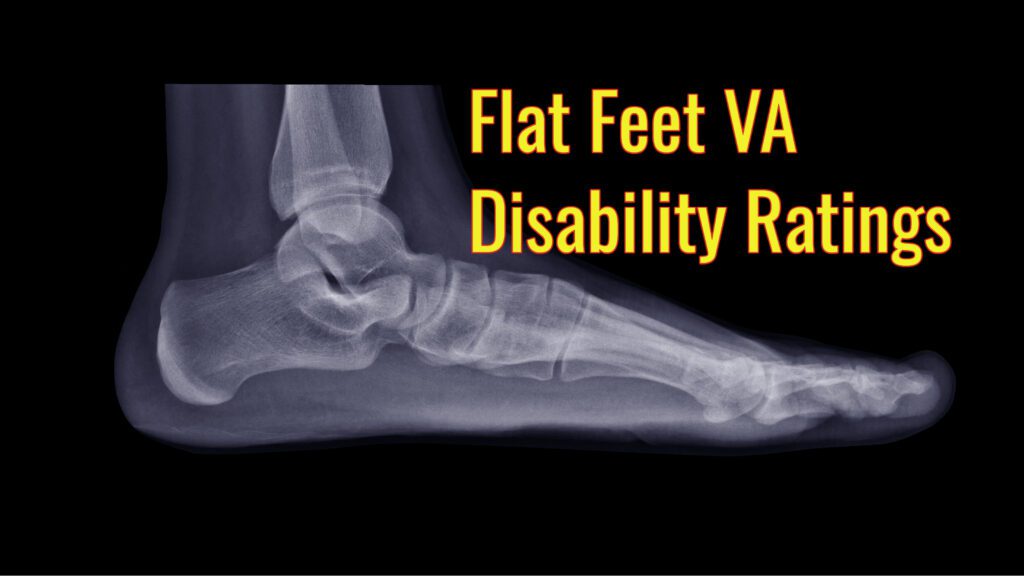
The VA rates flat feet using Title 38 CFR, Role four, Schedule for Rating Disabilities, Diagnostic Code (DC) 5276, Flatfoot, Caused.
Apartment feet VA disability ratings range from 0% to 50% with interim breaks at 10%, 20%, and 30% depending upon unilateral or bilateral, and the severity of your symptoms in terms of frequency, severity, and duration.
50 Percent Flat Feet VA Rating (Bilateral)
The 50 percent VA rating is appropriate for severe bilateral flat feet pronounced with marked pronation, extreme tenderness of plantar surfaces of the feet, marked inward displacement and severe spasm of the tendo achillis on manipulation, not improved by orthopedic shoes or appliances.
30 Percent VA Rating for Pes Planus (Unilateral)
The 30 percentage VA rating is appropriate for astringent unilateral apartment feet pronounced with marked pronation, extreme tenderness of plantar surfaces of the feet, marked inward deportation and severe spasm of the tendo achillis on manipulation, not improved by orthopedic shoes or appliances.
xxx Percent VA Disability Rating for Flat Feet (Bilateral)
The 30 per centum rating for pes planus is advisable for bilateral flat anxiety with objective prove of marked deformity (pronation, abduction, etc.), hurting on manipulation and use accentuated, indication of swelling on employ, characteristic callosities (yellow calluses). The photograph below is an case of yellow calluses and cracking of the heel.
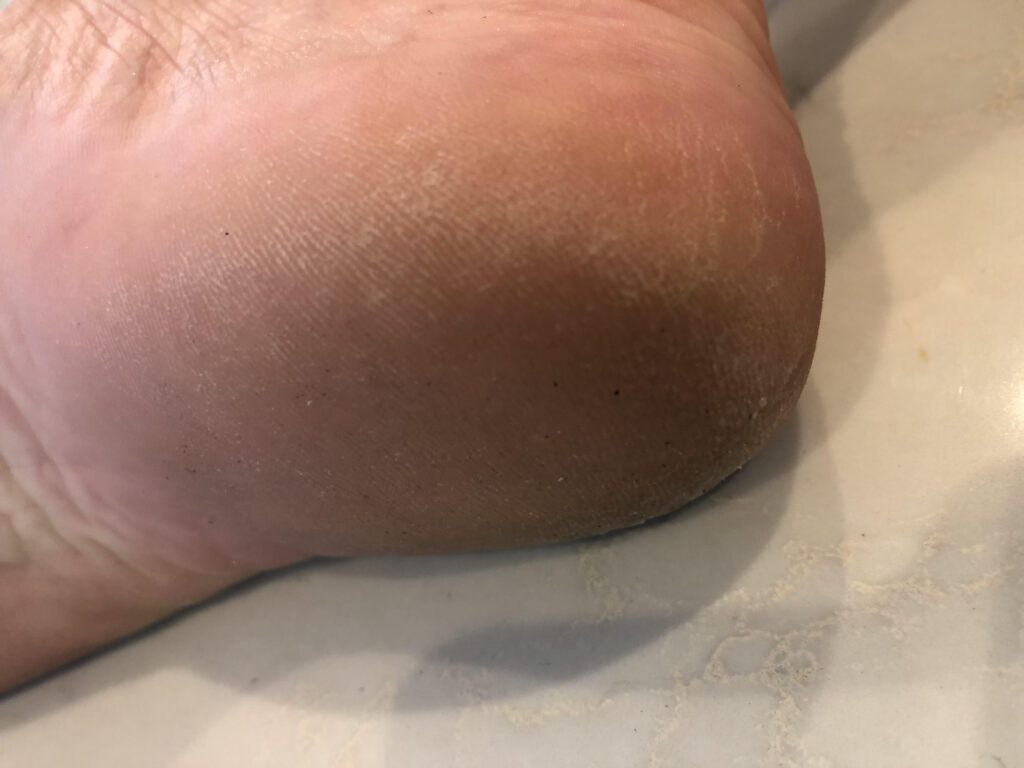
20 Percent VA Rating for Foot Planus (Unilateral)
The twenty percent rating for flat feet is appropriate for unilateral pes planus with objective bear witness of marked deformity (pronation, abduction, etc.), pain on manipulation and use accentuated, indication of swelling on employ, characteristic callosities (yellow calluses).
x Percent Pes Planus VA Rating (Bilateral or Unilateral)
The 10 percent VA rating for pes planus is appropriate for moderate symptoms such as weight-begetting line over or medial to bang-up toe, inwards bowing of the tendo achillis, pain on manipulation and use of the feet, bilateral or unilateral.
0 Pct VA Rating for Flat Anxiety (Bilateral or Unilateral)
The 0 per centum VA disability rating for flat feet is appropriate for mild symptoms relieved by built-up shoe or arch back up .
What is the Hurting Motion Principle for Apartment Feet?
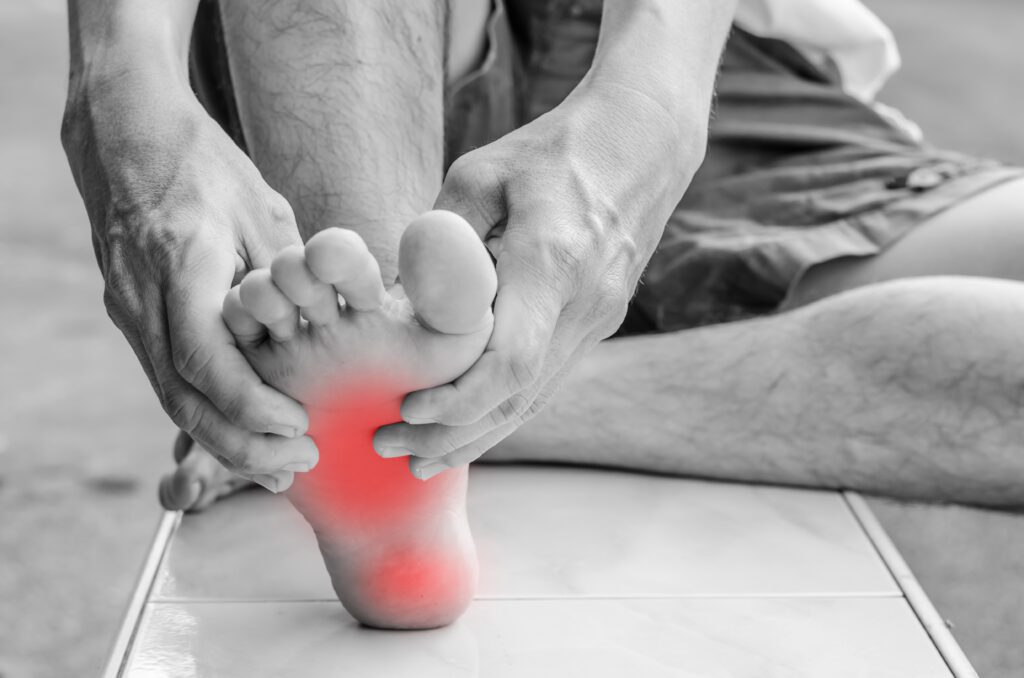
The painful movement principle means that regardless of range of motility, if hurting is nowadays, the veteran should at least be awarded the minimum level of compensable inability for that status.
For instance, allow's say you have full range of motion for your flat feet and no functional harm or loss, only you have pain during movement, so you should exist awarded the minimum level of inability for pes planus, which is 10%.
List of VA Secondary Conditions to Flat Anxiety

In veterans with symptoms, at that place may be complaints of the midfoot, heels, lower legs, knees, hips, and or back hurting, which tin can all exist linked and rated as secondary conditions to apartment anxiety.
Other conditions linked to flat feet in a bi-directional relationship include leg length differences, pregnancy, Marfan's syndrome, rheumatoid arthritis, and scoliosis, obesity, injuries to your foot or ankles, and diabetes.
List of Mutual Conditions Secondary to Flat Anxiety:
- Plantar Fasciitis
- Arthritis
- Hip Pain
- Human knee Hurting
- Leg Pain
- Ankle Pain
- Back Pain
- Radiculopathy
- Degenerative Disc Disease
Can I Get a VA Disability Rating for Flat Feet and Plantar Fasciitis?
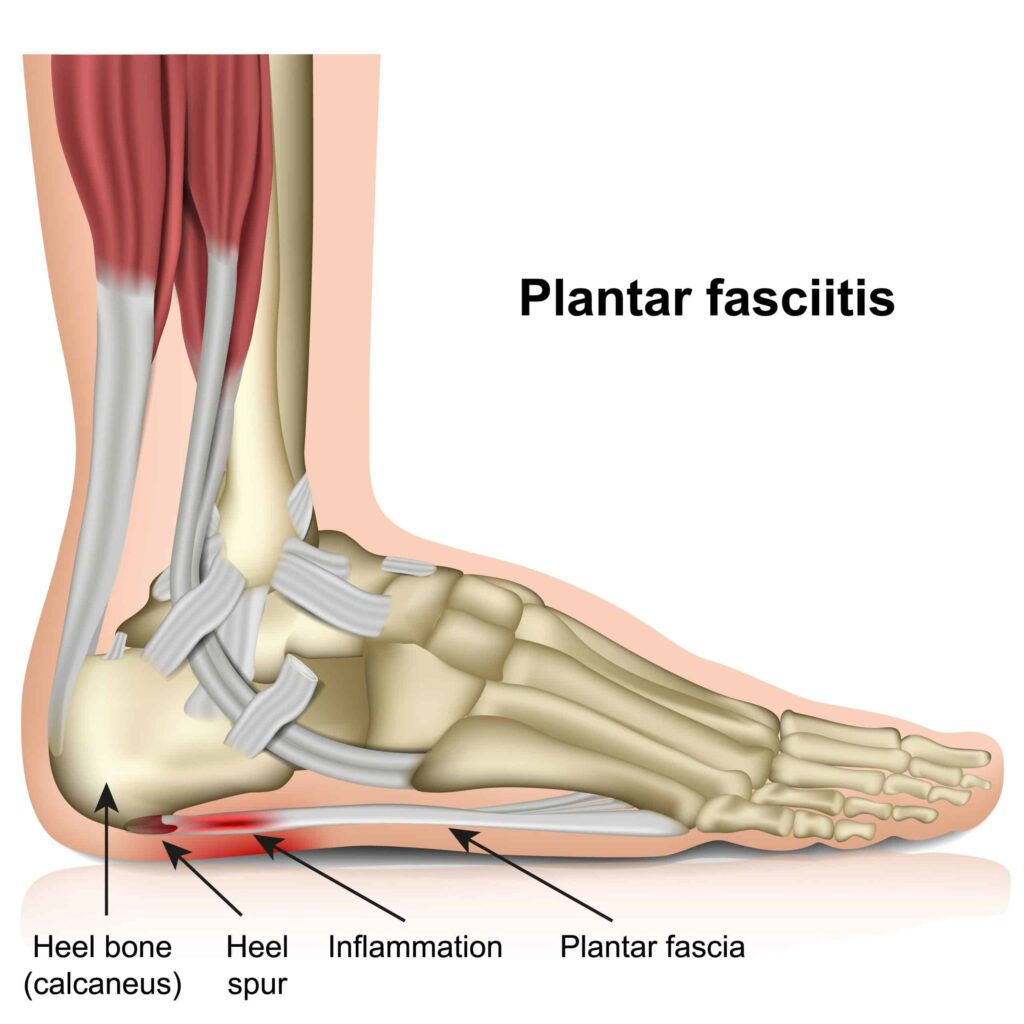
The VA rates Pes Planus (Flat Feet) using Title 38 CFR, Office 4, Schedule for Rating Disabilities, Diagnostic Code (DC) 5276, Flatfoot versus Plantar Fasciitis, which is rated nether DC 5269.
The highest scheduler rating for astringent bilateral flat feet is fifty%, whereas the highest scheduler rating for severe bilateral plantar fasciitis is xxx%.
Because the symptoms associated with flat feet and plantar fasciitis are so like, it's highly unlikely to go separate VA ratings for flat anxiety and plantar fasciitis due to theabstention of pyramiding.
However, if a veteran has both conditions diagnosed, with similar symptoms for each disability, according to the "higher of ii evaluations" principle, the higher rating will be assigned if the disability picture more than nearly approximates the criteria required for that rating.
For example, if y'all have both severe bilateral flat feet and severe bilateral plantar fasciitis, the VA Rater should grant the l% rating for pes planus considering it's the higher of the 2 ratings (the maximum scheduler rating for severe bilateral plantar fasciitis is thirty%).
What Should I Wait at a Flat Anxiety VA C&P Exam?
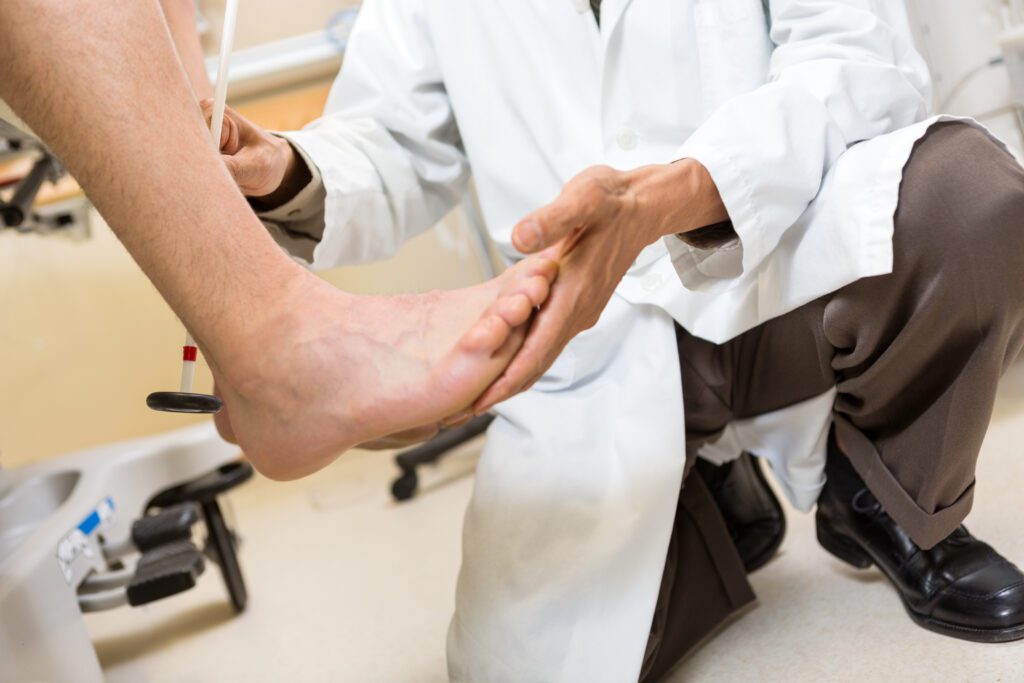
A C&P examination for apartment feet involves a concrete test of the feet for tenderness, swelling, calluses, pain, and functional impairment or loss, likewise as a walking examination for overpronation.
Sometimes the C&P examiner will order X-Rays of one or both feet to check for foot deformities such as calcified heel spurs.
The following 24-questions volition be answered past the C&P examiner on the electronic version of the Disability Benefits Questionnaire for Human foot Atmospheric condition, Including Flatfoot (Pes Planus).
1. Does the Veteran have pain on utilise of the feet?
If yes, indicate the side(south) affected and if pain is accentuated on use.
2. Does the Veteran have pain on manipulation of the anxiety?
If yes, indicate the side(s) affected and if hurting is manipulated on utilize.
3. Is in that location indication of swelling on use?
If yes, indicate the side(s) affected.
4. Does the Veteran have characteristic calluses?
If yes, point the side(s) affected.
5. Does the Veteran utilise curvation supports or built-up shoes?
If yep, indicate the effect of symptoms and if the veteran receives relief in 1 or both sides of the foot.
six. Does the Veteran have extreme tenderness of plantar surfaces on one or both feet?
If yes, indicate the side(s) afflicted.
7. Is the tenderness improved past orthopedic shoes or appliances?
If yes, betoken the side(due south) affected.
8. Does the Veteran have decreased longitudinal arch height of one or both feet on weight-bearing?
If yes, indicate the side(s) affected.
9. Is there objective evidence of marked deformity of 1 or both feet (pronation, abduction, etc.)?
If yes, point the side(due south) afflicted.
ten. Is in that location marked pronation of ane foot or both anxiety?
If yes, indicate the side(s) affected.
11. Is the condition improved past orthopedic shoes or appliances?
If yes, indicate the side(s) affected.
12. For one or both anxiety, is the weight-begetting line over or medial to the dandy toe?
If yes, point the side(due south) affected.
13. Is in that location a lower extremity deformity other than human foot planus, causing amending of the weight-bearing line?
If yes, indicate the side(southward) affected and describe the lower extremity deformity other than human foot planus causing amending of the weight-bearing line.
fourteen. Does the Veteran have "inward" bowing of the Achilles' tendon (i.e., hindfoot valgus, with lateral divergence of the heel) of one or both feet?
If yes, signal the side(south) affected.
15. Does the Veteran take marked inward displacement and astringent spasm of the Achilles' tendon (rigid hindfoot) on manipulation of 1 or both feet?
If yes, indicate the side(s) affected.
16. Is the marked inward deportation and severe spasm of the Achilles' tendon improved by orthopedic shoes or appliances?
If yeah, signal the side(due south) affected.
17. Does the Veteran take whatsoever "Functional Loss" due to his/her flat anxiety?
The VA defines functional loss as the "inability, due to damage or infection in parts of the arrangement, to perform normal working movements of the body with normal excursion, strength, speed, coordination and/or endurance."
Equally regards to the joints, factors of disability reside in reductions of their normal excursion of movements in different planes.
Using data based on a review of all procurable information, to include the Veteran's statement on examination, instance-specific evidence (to include medical handling records when applicable and lay bear witness), the examiner's medical expertise, and physical exam, select the factors below that contribute to functional loss or impairment (regardless of repetitive use) or to additional limitation of range of motion (ROM) subsequently repetitive employ for the joint or extremity being evaluated on this Disability Benefits Questionnaire for Apartment Anxiety:
- No functional loss for left lower extremity attributable to claimed condition
- No functional loss for right lower extremity owing to claimed condition
- Less movement than normal
- More than movement than normal
- Weakened movement
- Swelling
- Deformity
- Atrophy of disuse
- Instability of station
- Disturbance of locomotion
- Interference with sitting
- Interference with standing
- Hurting
- Fatigue
- Weakness
- Lack of endurance
- Incoordination
- Other, describe:
eighteen. Does procured evidence (statements from the Veteran) suggest pain, fatigability, weakness, lack of endurance, or incoordination which significantly limits functional power during flare-ups and/or later on repeated employ over fourth dimension?
If yes, indicate the side(s) affected.
If yes, (there is a functional loss due to hurting, during flare-ups and/or after repeated use over fourth dimension), please describe the functional loss besides as cite and discuss evidence (must be specific to the instance and based on all procurable evidence).
19. Is in that location any other functional loss during flare-ups and/or later on repeated use over fourth dimension?
If aye, betoken the side(southward) afflicted.
20. Is there evidence of hurting on any of the following?
- Passive motion
- Active motion
- Weight-bearing
- Non-weight-bearing
- On remainder/not-movement
If yeah, betoken the side(s) afflicted.
21. Has Diagnostic Testing been performed?
Note: Diagnostic Testing is non necessary for every condition. Plain or weight-bearing pes x-rays are not required to make the diagnosis of flatfoot. The diagnosis of degenerative arthritis (osteoarthritis) or post-traumatic arthritis must be confirmed by imaging studies. Once such arthritis has been documented, fifty-fifty if in the by, no further imaging studies are required by VA, even if arthritis has worsened.
22. Have imaging studies been performed in conjunction with this examination?
If yes, provide type of exam or procedure, date, and results.
23. Does the Veteran have "Functional Touch on" to their work, life, and social functioning?
Note: Provide the bear upon of only the diagnosed condition(s), without consideration of the touch of other medical conditions or factors, such as age.
24. Regardless of the Veteran's current employment status, do the status(s) listed in the diagnosis section touch his or her ability to perform whatsoever type of occupational task (such every bit standing, walking, lifting, sitting, etc.)?
If yes, describe the functional impact of each condition, providing ane or more than examples.

Brian Reese
Founder & CEO
Brian Reese is VA benefits adept, writer of the #one Amazon Bestseller You lot Deserve It: The Definitive Guide to Getting the Veteran Benefits Y'all've Earned, and founder of VA Claims Insider –"The Virtually Trusted Proper name in Teaching-Based Resources for Veterans."
His frustration with the8-step VA inability claims process led him to create"VA Claims Insider," which provides U.South. military veterans with tips, strategies, and lessons learned for successfully submitting or re-submitting a winning VA inability compensation claim.
Brian isbesides the CEO ofArmed services Inability Fabricated Easy, which is the world'south largest free searchable database for all things related to DoD disability and VA disability claims and has served more than four,600,000 military members and veterans since its founding in 2013.
His eBook, the"ix Secrets Strategies for Winning Your VA Disability Claim" has been downloaded more than 300,000 times in the by three years and is the #i rated free VA inability claims guide for veterans.
He is aformer agile duty Air Force officer with extensive experience leading hundreds of individuals and multi-functional teams in challenging international environments, including a combat bout to Transitional islamic state of afghanistan in 2011 supporting Operation ENDURING FREEDOM.
Brian is a Distinguished Graduate of Direction from theUnited States Air Forcefulness University, Colorado Springs, CO and he holds an MBA from Oklahoma State Academy's Spears Schoolhouse of Business, Stillwater, OK, where he was a National Honour Scholar (Top 1% of Graduate School class).
Source: https://vaclaimsinsider.com/top-3-ways-to-get-a-va-rating-for-flat-feet/
Posted by: arnoldforthemight.blogspot.com


0 Response to "How To Connect Flat Feet To Military Service"
Post a Comment